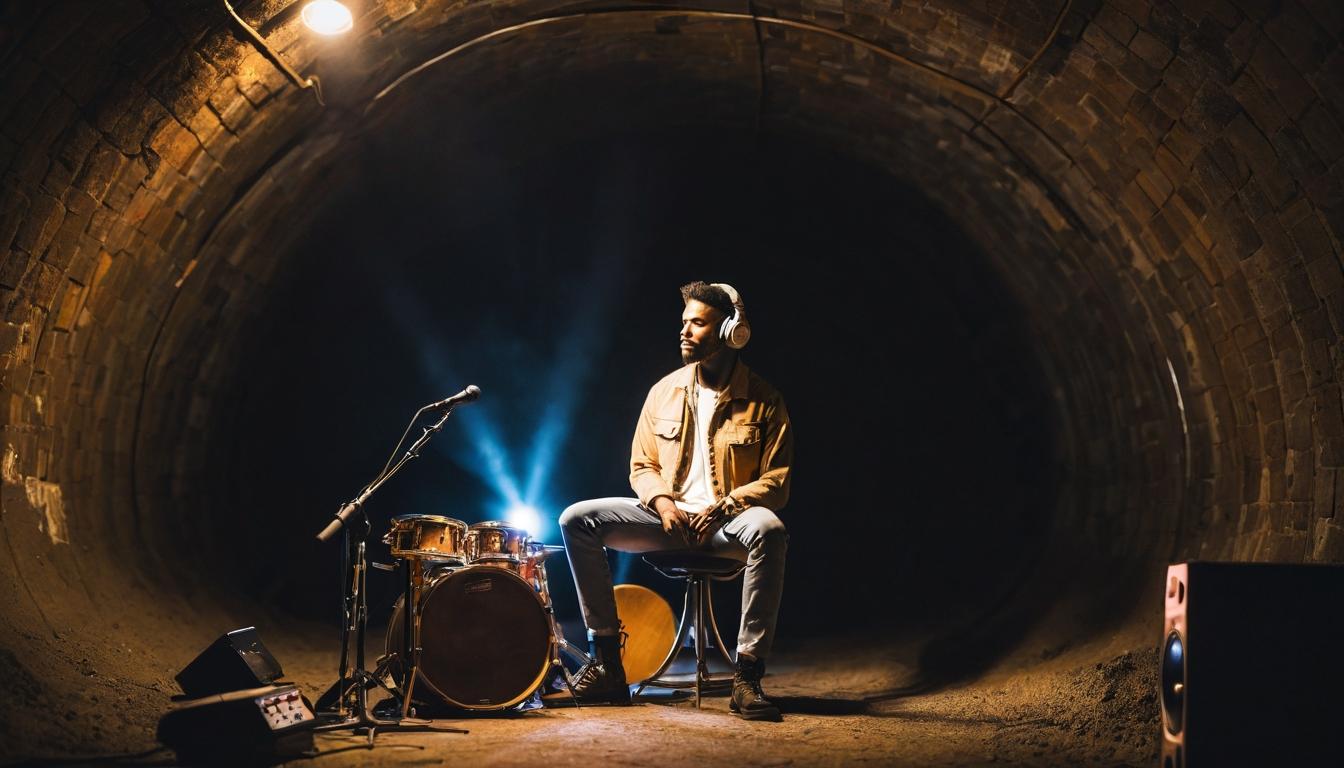The music industry's tectonic plates are shifting beneath our feet. While streaming algorithms continue to push familiar names, a quiet revolution is brewing in the underground scenes that will soon redefine what mainstream sounds like. From the DIY bedrooms of London to the makeshift studios of Mexico City, artists are building followings not through traditional industry channels, but through authentic connections forged in digital spaces and intimate live settings.
Hyperpop's ghost continues to haunt contemporary production, but its influence has evolved into something more subtle and sophisticated. The genre's maximalist tendencies have been tempered, creating a new wave of artists who understand that emotional resonance doesn't require sonic overload. These musicians are crafting songs that feel both intimate and expansive, using production techniques that would have sounded alien just five years ago but now feel strangely familiar.
Meanwhile, the lines between electronic and acoustic instrumentation continue to blur in fascinating ways. Producers are sampling field recordings from urban environments and natural landscapes, weaving these textures into compositions that feel both organic and synthetic. The result is music that captures the complexity of modern existence—the tension between our digital lives and physical realities, between global connectivity and local isolation.
Latin American artists are leading one of the most exciting developments in global music, but not in the ways you might expect. While reggaeton continues its commercial dominance, a parallel movement of experimental musicians is drawing from regional folk traditions and fusing them with contemporary electronic production. These artists aren't chasing crossover success; they're creating music that speaks to their specific experiences while resonating with universal human emotions.
The vinyl revival has entered a new phase, moving beyond nostalgia into something more substantive. Independent labels are using the format not just as a revenue stream, but as a statement of artistic intent. Limited edition pressings with elaborate packaging have become the new business cards for emerging artists—tangible artifacts in an increasingly digital landscape that signal seriousness and commitment to craft.
Social media platforms continue to shape musical discovery in unpredictable ways. TikTok's influence has matured beyond viral dance challenges into more nuanced forms of music promotion. Artists are using the platform to document their creative processes, share behind-the-scenes glimpses of tour life, and build communities around shared aesthetic sensibilities. The most successful aren't just creating content—they're cultivating relationships.
Live music is undergoing its own transformation as venues adapt to changing audience expectations. The post-pandemic concert experience has evolved, with fans seeking more immersive and interactive events. From multi-sensory installations to collaborative performances that blur the line between artist and audience, the live experience is becoming as much about connection as it is about entertainment.
Artificial intelligence's role in music creation remains controversial, but the conversation is shifting from whether AI should be used to how it can serve human creativity. Forward-thinking producers are using machine learning tools not as replacements for human expression, but as collaborators that can generate unexpected starting points or help break creative blocks. The most interesting developments are happening at the intersection of technical innovation and artistic intuition.
The economics of being a working musician continue to challenge all but the most successful artists, but new models are emerging that offer hope. Direct fan funding through platforms like Patreon has evolved beyond basic support into sophisticated ecosystems where supporters become active participants in an artist's creative journey. These relationships are changing what it means to be a fan and redefining success outside traditional industry metrics.
Genre boundaries have never been more porous, and the most exciting music being made today exists in the spaces between established categories. Artists are drawing from seemingly incompatible influences and creating hybrid forms that feel both fresh and inevitable. This isn't the calculated genre-blending of major label marketing departments, but organic fusions that reflect the complex identities of their creators.
What connects all these developments is a renewed emphasis on authenticity and community. After years of algorithm-driven homogenization, audiences are craving music that feels specific and personal. The artists who are cutting through the noise aren't necessarily the most technically proficient or commercially savvy—they're the ones who understand that great art emerges from genuine human connection.
The underground sounds reshaping mainstream music in 2024

